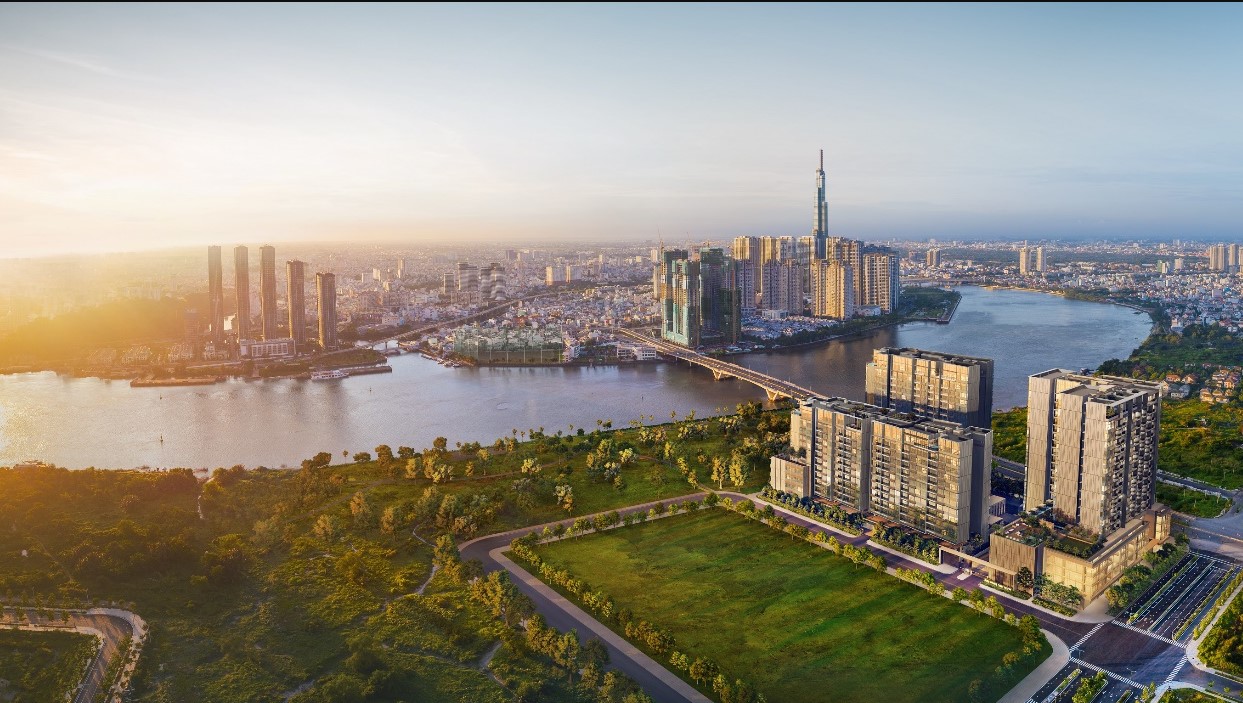
Emerging Real Estate Markets You Should Keep An Eye On For 2025
Tooba
Real estate has long been a cornerstone of investment strategies, and as 2025 unfolds, new markets are showing promising growth potential. While traditional markets like New York, London, and Tokyo have remained dominant for years, emerging markets are gradually shifting the landscape. These markets offer fresh opportunities for investors, homebuyers, and renters alike. As economies adapt to post-pandemic realities, the rise of these emerging markets comes with new economic dynamics, shifting demand for housing, and favorable government policies.
In this article, we'll examine some of the key emerging real estate markets to watch in 2025. From cities in the U.S. to international destinations, we will explore the factors driving these markets forward and why they could present significant opportunities.
U.S. Sunbelt Cities: Growth Amidst Transition
The U.S. Sunbelt has been gaining attention for several years now, and 2025 is no exception. Cities in the southern and southwestern United States, like Austin, Dallas, Nashville, and Phoenix, continue to show exceptional growth. The combination of affordable housing, warm climates, business-friendly environments, and increasing remote work flexibility has made these regions particularly appealing to both individuals and companies.

For example, Austin, Texas, has consistently ranked as one of the fastest-growing cities in the U.S. As the tech industry grows and more companies establish regional offices, real estate demand has surged. The city’s reputation as a cultural hub and its status as a major tech hub (sometimes referred to as “Silicon Hills”) contribute to both its residential and commercial real estate boom.
Similarly, Phoenix, Arizona, has experienced rapid population growth, driven in part by its relatively affordable real estate compared to coastal cities. It’s also becoming a prime destination for remote workers seeking sunny weather and lower cost of living. With 2025 projected to be another year of high migration from more expensive states like California, these cities will likely continue their upward trend.
These Sunbelt cities have experienced robust demand for single-family homes and apartments, along with a steady influx of corporate relocations. With the ongoing trend of remote work and lower taxes, these areas are ripe for real estate investments, especially for those looking at long-term rental properties.
Latin America: A Region On The Rise
In the realm of international real estate, Latin America stands out in 2025 as an increasingly attractive region. Nations like Mexico, Colombia, and Panama have emerged as key players in the real estate market thanks to strong economic growth, improving infrastructure, and favorable investment climates.
Mexico, for instance, has long been a popular destination for both vacation homes and retirees, particularly along its Pacific and Caribbean coasts. However, in recent years, cities like Querétaro and Guadalajara have started to experience rapid urbanization, making them promising markets for real estate development. The country’s proximity to the U.S. also continues to make it an appealing location for those seeking more affordable living options just south of the border.

Colombia, particularly Bogotá and Medellín, is also growing in popularity. The country has undergone a remarkable transformation over the past decade, with improved security, a thriving tech sector, and strong tourism numbers. The combination of these factors has made Colombia one of the fastest-growing real estate markets in Latin America. Medellín, in particular, is seeing a real estate surge as the city attracts remote workers and digital nomads seeking a pleasant climate and affordable living.
For international investors, Panama remains an attractive choice as well. The country’s stable economy, robust banking system, and strategic location with access to both the Pacific and Atlantic oceans make it a favorable market for real estate investments. Panama City is experiencing significant growth in both residential and commercial properties.
The Latin American market offers opportunities for diversification, with lower entry costs and higher potential for returns compared to more saturated markets like the U.S. or Europe. The emerging trend of remote work continues to fuel demand for real estate in these regions, offering investors a chance to tap into markets that are still in the early stages of growth.
Southeast Asia: Booming Growth In Key Cities
Southeast Asia is another region to watch in 2025, with countries like Vietnam, Indonesia, and the Philippines experiencing rapid urbanization and economic growth. Real estate demand is growing in key cities due to rising middle-class populations, improved infrastructure, and increased foreign investment.
Ho Chi Minh City in Vietnam, for example, has been experiencing a construction boom in both residential and commercial real estate. The country’s fast-growing manufacturing sector, coupled with a young population and growing foreign investment, makes it one of the most attractive destinations for real estate development in the region. With a strong potential for rental income and capital appreciation, Ho Chi Minh City is becoming a hotspot for investors.

Jakarta remains the commercial capital of Indonesia, but cities like Surabaya and Bali have started to capture the attention of both local and international real estate investors. Surabaya, Indonesia's second-largest city, is benefiting from the country's industrial expansion and improved transportation infrastructure. Meanwhile, Bali, already popular for tourism, has been seeing increasing demand for long-term rental properties due to its appeal to digital nomads.
The Philippines is also an exciting market, with Metro Manila continuing to be the dominant force in the real estate sector. However, areas like Cebu and Davao are emerging as key players, with growing economies and increasing infrastructure development. The country’s stable economic growth and business-friendly environment continue to make it an appealing destination for foreign investors.
As Southeast Asia experiences an influx of foreign capital and more people move to urban centers for better job opportunities, the real estate markets in these regions are expected to see substantial growth in 2025 and beyond. Whether through commercial properties, residential developments, or rental properties, investors can look forward to a range of opportunities across Southeast Asia.

Africa: The Untapped Potential
Africa, often overlooked in global real estate discussions, is poised to become a significant player in the real estate market in the coming years. Countries like Nigeria, Kenya, and South Africa are beginning to see significant investments in their real estate sectors, driven by urbanization, economic growth, and an increasing middle class.

Lagos, Nigeria’s largest city, is experiencing rapid growth, with new housing developments and commercial real estate projects popping up across the city. The Nigerian government’s focus on infrastructure development, along with a burgeoning tech scene, is driving demand for residential and office spaces. Despite its challenges, the African real estate market offers high potential returns for those willing to navigate the complexities of the region.
Kenya, and particularly Nairobi, is another country seeing an uptick in real estate activity. The city has become a hub for international companies and a center for technology and innovation in East Africa. As Kenya's middle class grows and urbanization accelerates, demand for both commercial and residential properties is expected to increase. Nairobi’s property market continues to attract foreign investors due to its strategic position as the regional business hub.
South Africa remains the most developed economy in sub-Saharan Africa, with Cape Town and Johannesburg standing out as prime real estate markets. Although the country faces some economic challenges, the relatively low property prices and growing demand for both residential and commercial real estate make it an attractive market for investors, particularly those looking for long-term gains.
Africa's real estate market offers a unique opportunity for investors willing to take on more risk. With a growing population, urbanization, and increased foreign investment, Africa is poised for growth in the real estate sector over the next decade.
Conclusion
In 2025, emerging real estate markets present a wide range of opportunities, from the Sunbelt cities in the U.S. to growing markets in Latin America, Southeast Asia, and Africa. Each of these regions offers unique advantages, such as affordability, economic growth, and increasing demand for residential and commercial properties. While there are challenges to navigating these markets, the potential for high returns is significant for those who conduct thorough research and approach these markets with a long-term investment strategy.
Whether you're a first-time investor or an experienced real estate professional, keeping an eye on these emerging markets in 2025 will be key to identifying new opportunities and staying ahead of market trends. By diversifying investments into these up-and-coming regions, you can potentially secure a profitable portfolio while contributing to the growth of these developing economies.




